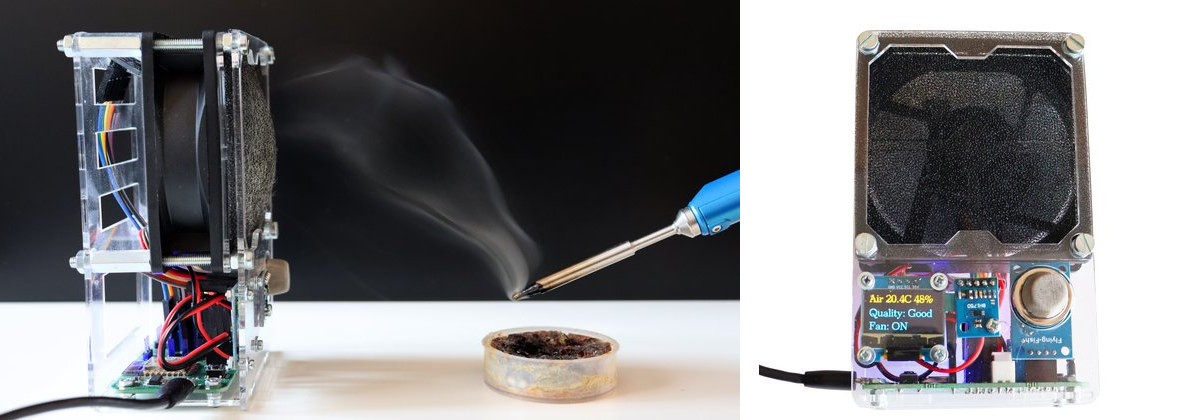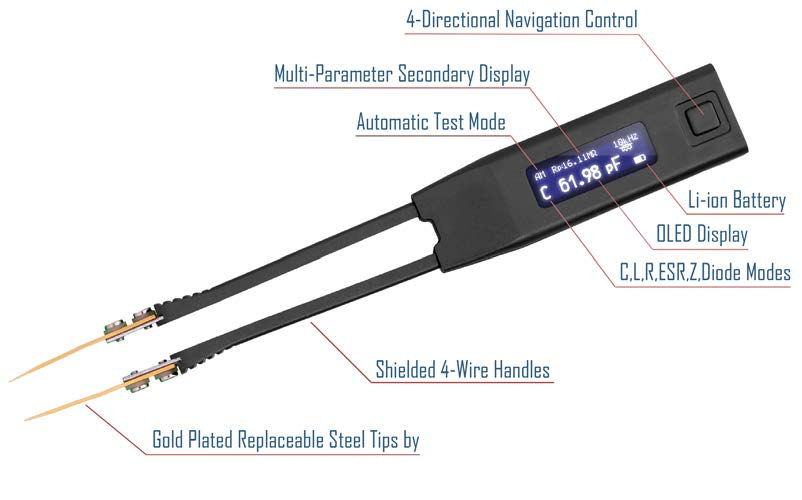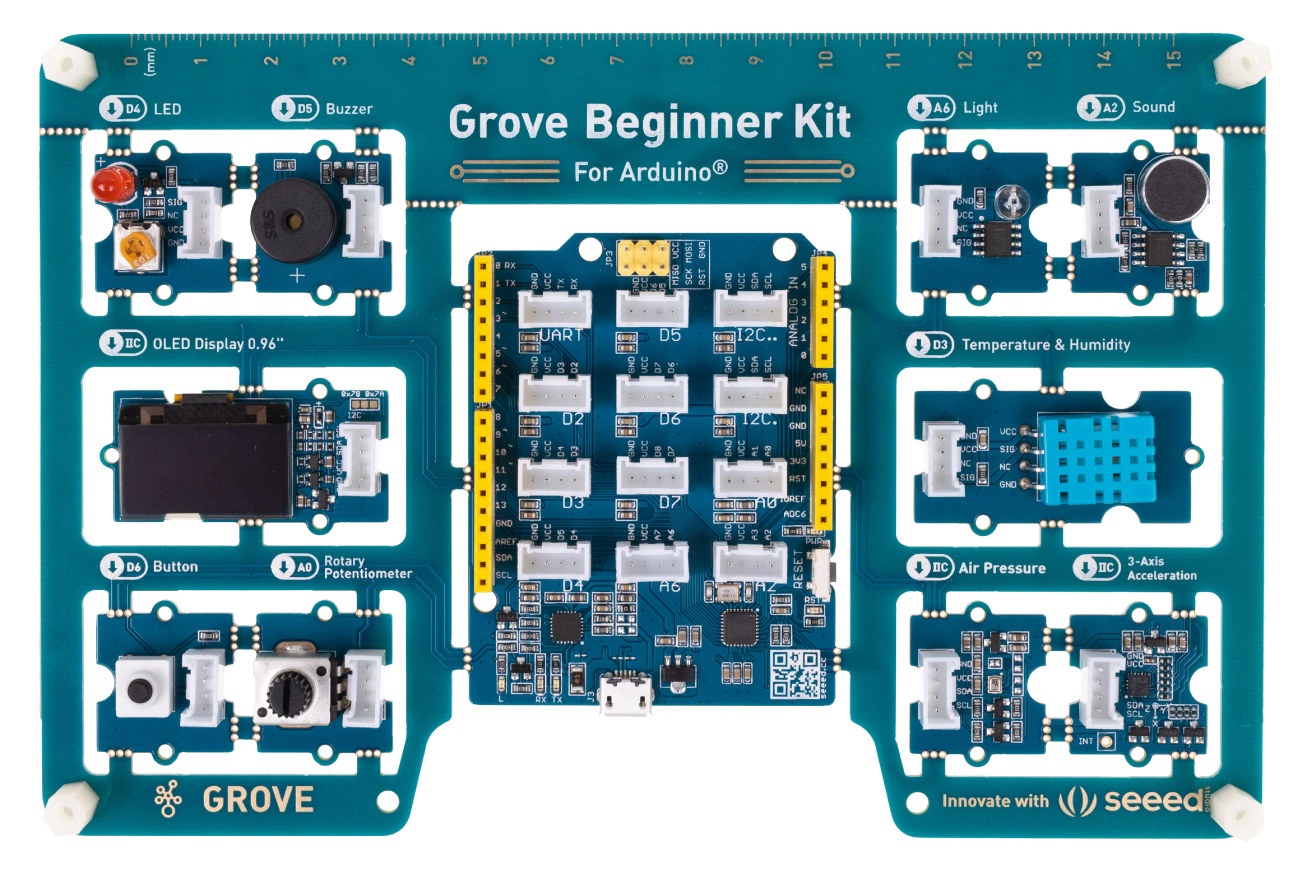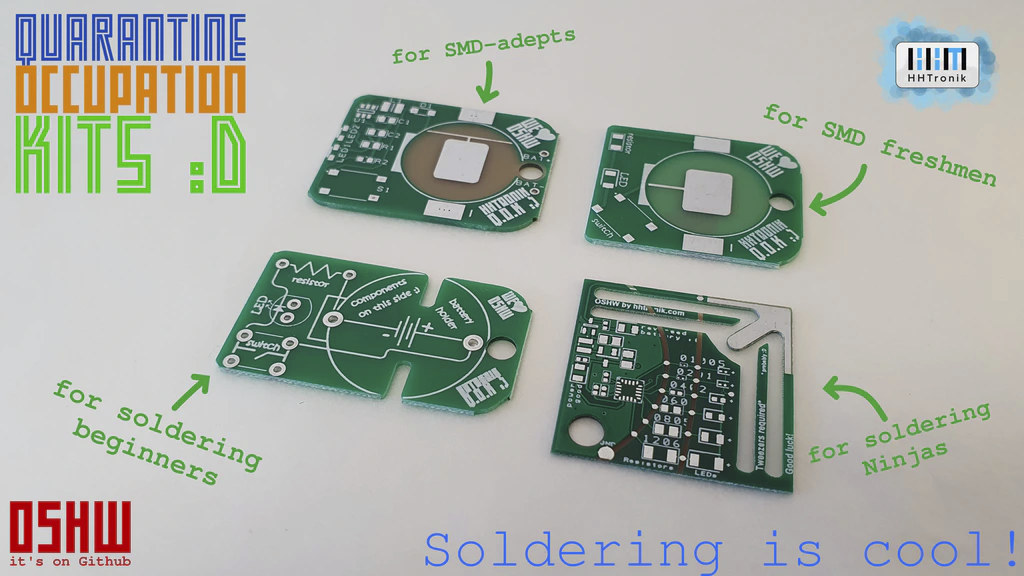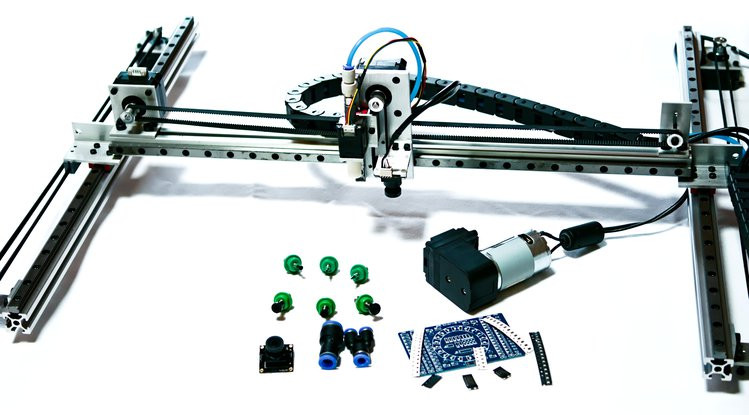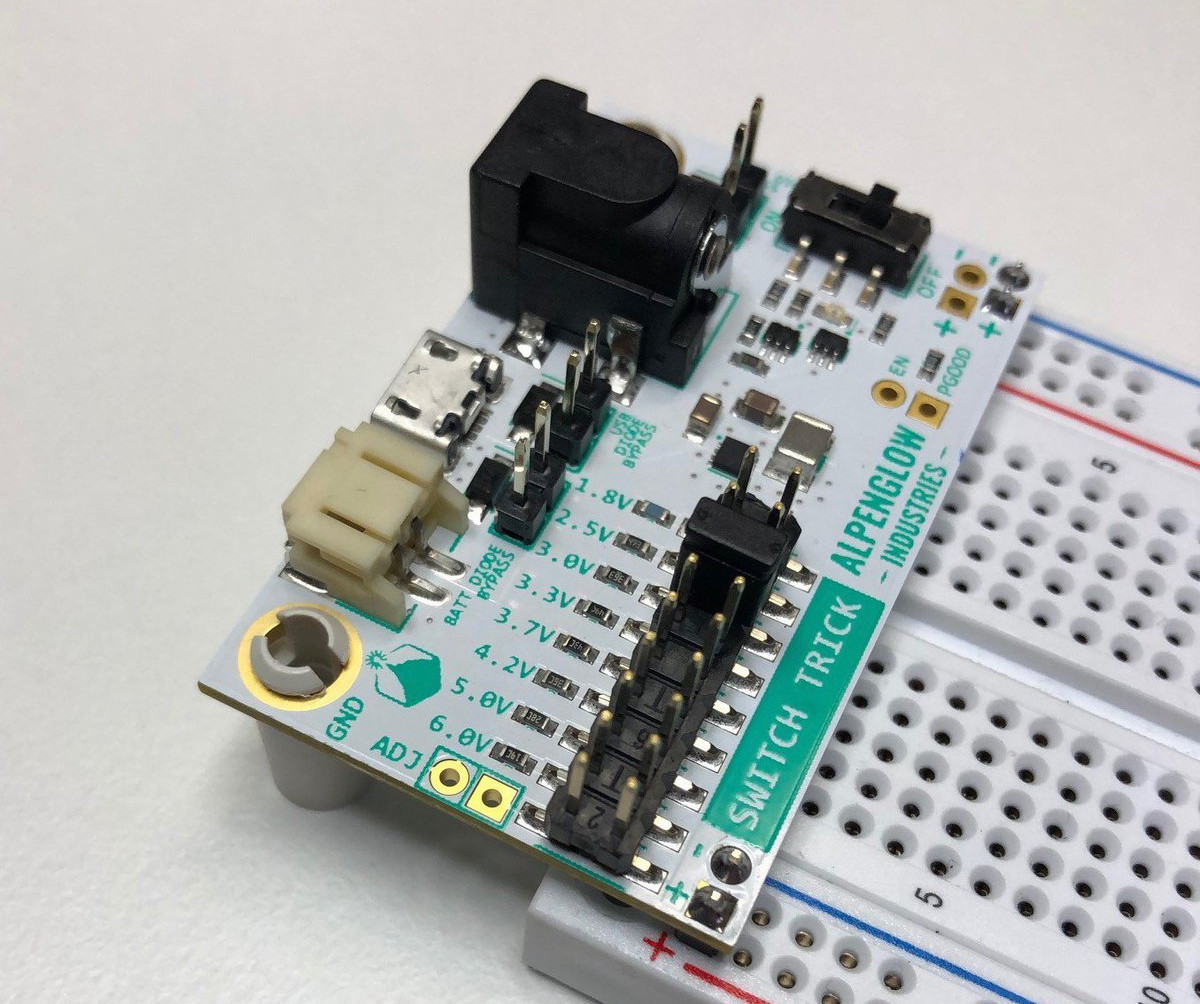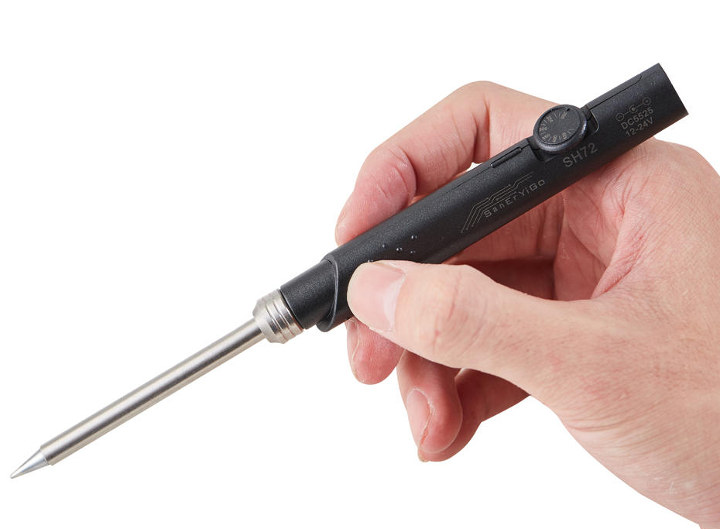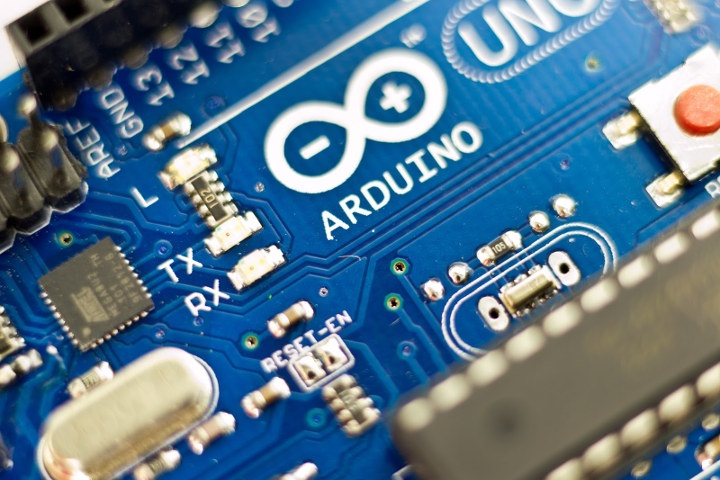Last year, I played with ESP8266 based ANAVI Gas Detector Starter Kit reporting air quality via an MQ135 sensor on an OLED display, and integrated it with Home Assitant to monitor air quality from a neat web dashboard. The developer, Leon ANAVI, has now adapted the design to create ANAVI Fume Extractor by basically adding a relay to control a control. The fan can be turned on/off manually, or automatically upon detecting bad air quality. ANAVI Fume Extractor key features and specifications: Fan – 80 mm, 5 V DC, 0.25 A with replaceable filter SoC – ESP8266 Tensilica L106 32-bit wireless processor Connectivity – 802.11 b/g/n Wi-Fi 4 Display – Mini OLED display Sensors – Optional MQ-135 for air quality or any other 5V MQ analog gas sensor Expansion – 3x headers for I²C sensors Debugging / Programming – UART pins for flashing custom firmware, Misc – Button, WiFi on/off […]
Smart Tweezers Colibri ST-5S Integrates LCR Meter, Identifies SMD Components
Soldering SMD components normally require a pair of tweezers, and since those components are so small it may be hard to read the value on them if any. That means if you’d like to double-check the value of an SMD component you may have to use a multimeter first, before placing it on the board and solder it. There’s a better way: Ideal-Tek Smart Tweezers Colibri ST-5S with a built-in LCR meter that can help you automatically identify SMD components and read their values in a convenient tweezers form factor. Smart Tweezers Colibri ST-5S key features & specifications: Built-in high-precision LCR probe Display – OLED Display Ranges Resistance (R) – 0.05 Ohm to 9.9 MOhm Capacitance (C) – 0.5 pF to 4999 uF Inductance (L) – 0.5 uH to 999 mH Quality Factor (Q) – 0.001 to 1,000 Dissipation Factor (D) – 0.001 to 1,000 AC test mode Test frequency […]
Grove Beginner Kit for Arduino Features Arduino UNO Compatible Board & Ten Pre-wired Modules
Arduino boards are great to get started with electronics has they offer an ecosystem of expansion modules and libraries, as well as tutorials, that may it easy to get started with almost any projects. Seeed Studio Grove is a family of standardized modules with 4-pin headers using digital I/O, analog I/O, UART or I2C interfaces and allowing you to easily connect to compatible board such as Seeeduino Lotus board. You still need to connect the Grove module via cables, so Seeed Studio decided to create a big board called Grove Beginner Kit for Arduino that features Seeduino Lotus at the center and ten pre-wired and detachable Grove modules so no cabling is required to get started apart from a USB cable. List of Grove Beginner Kit for Arduino board and modules: Seeeduino Lotus ATmega320p board compatible with Arduino UNO compatible board and featuring 12 Grove connectors 10 pre-wired modules without […]
Bored during Quarantine? Get some Soldering Kits to keep you Busy (Crowdfunding & Alternatives)
I’ve heard some of you are forced to stay at home for some reason… HHTronik has decided to design what they call “Quarantine Occupation Kits” which are actually open-source hardware soldering kits of varying complexity. Five soldering kits are available: I learn soldering TH (Super Easy) – Ten solder joints with one LED, one resistor, one switch and a CR2032 coin cell holder using through-hole components. The end results is a flashlight board I learn soldering SMD (Easy) – Same as above but with SMD (surface mount) components, and a more compact PCB. I learn soldering Boost Edition (Moderate) – More complex board with a bigger variety of parts and footprints including some slightly smaller and unusual parts (side view white LEDs, SOT23-6, SOT23-3, and 0805 passives). The assembled board is a step up” or “boost” converter taking 3V from the battery and bring it up to 6V to light […]
SimplePnP is a Low-Cost, Open Source Hardware Pick-and-Place Machine (Crowdfunding)
If you have a small production run for your board, it may not be cost-effective to ask a factory to manufacture it for you, and assembling the boards entirely by hand will be a time-consuming process. Getting a pick-and-place machine to automate the process would save time, but even the cheaper models on Aliexpress cost several thousand dollars. Citrus CNC tries to address the cost issue with the SimplePnP open source hardware pick-and-place machine that brings the price down to several hundred dollars. SimplePnP key features and specifications: MCU – Microchip Atmega328p running GRBL firmware Motor Drivers – TMC2209 stepper for two-phase stepper motors Word Area – 300 mm (X) x 300 mm (Y) Z Travel – 23 mm Components per Hour – 750 with vision assist Component Size – As small as 0402 (1005 metric) Vacuum Heads – Single vacuum head (base model), or optional dual-head Nozzle System – […]
SwitchTrick Switching Power Supply Board Helps you Test your Breadboard Circuit
We’ve covered several power supplies for breadboards over the years including toaster breadboard power supply with variable voltage output, or the portable, battery-powered MEGO power supply that allows you to power your project on the go. The SwitchTrick is another one of those breadboard power supplies but with testing in mind, as it takes input from various sources, and with jumper selection for voltage from 1.8V to 6V allows you to easily simulate different battery voltage levels, or the test the overvoltage protection of your circuit for example. SwitchTrick key features and specifications: Step-down converter – TI TPS62160 3-17V step down-convertor adjustable from 0.9-6V out at 1A. Power Input – 3V to 17V via 5.5×2.1mm power jack for 9V battery or wall supply Micro USB connector for 5V 2-pin JSY PH connector for battery 2x large plates holes for alligator clips Power Output (selectable by a jumper) 1.8V 2.5V 3.0V […]
SH72 Soldering Iron Looks Similar to TS100, Sells for around $10
TS100 is a popular soldering iron in the shape of a pen, and whose temperature is controlled by an STM32 microcontroller. Parameters such as temperature, temperature steps, sleep time and others can be setup over USB, and the soldering is powered by a standard 19V power supply often used with laptops. TS100 sells for around $50, while the more recent USB-C powered version (TS80) sells for a little over $70. But a new model that looks similar to TS100 minus the OLED display is now selling for around $10 on Banggood. SH72 soldering iron features and specifications: Temperature range – 220-400℃ Temperature control knob Available/supported tips – SH-B2/SH-BC2/SH-C4/SH-D24/SH-I/SH-K/SH-Ku (Hakko types) Power Supply 12-24V DC input up to 65 Watts via 5.5 x 2.5 mm barrel jack Modes of operation – 12V >=1.5A (18W); 16V >=2A (32W); 19V >=2.1A (40W); 24V >=2.7A (65W) Dimensions Control handle – 110 x 16 x […]
Moving Your Arduino Project to a Final Product: 8 Useful Tips
This article was written in collaboration with Jonathan Bara from Neoden USA Using Arduino to create your own tailor-made electronics equipment is a preferred method of thousands of electronics manufacturers worldwide, big and small. Arduino projects effectively start at the software to inform the Arduino microprocessor as to what to do, and then from there, move to the prototyping stage. An Arduino prototype is typically a very rough-looking machine whose only main goal is to prove that the concept at play is functional and worthy of refinement. After this stage, thought then goes into how to create a finished product that’s efficient, properly made, and ready for mainstream use. However, it isn’t always extremely easy to know when your prototype should go to the final design stage, or if there are still some kinks to be worked out. To make this process easier, here’s a list of ten tips when […]


